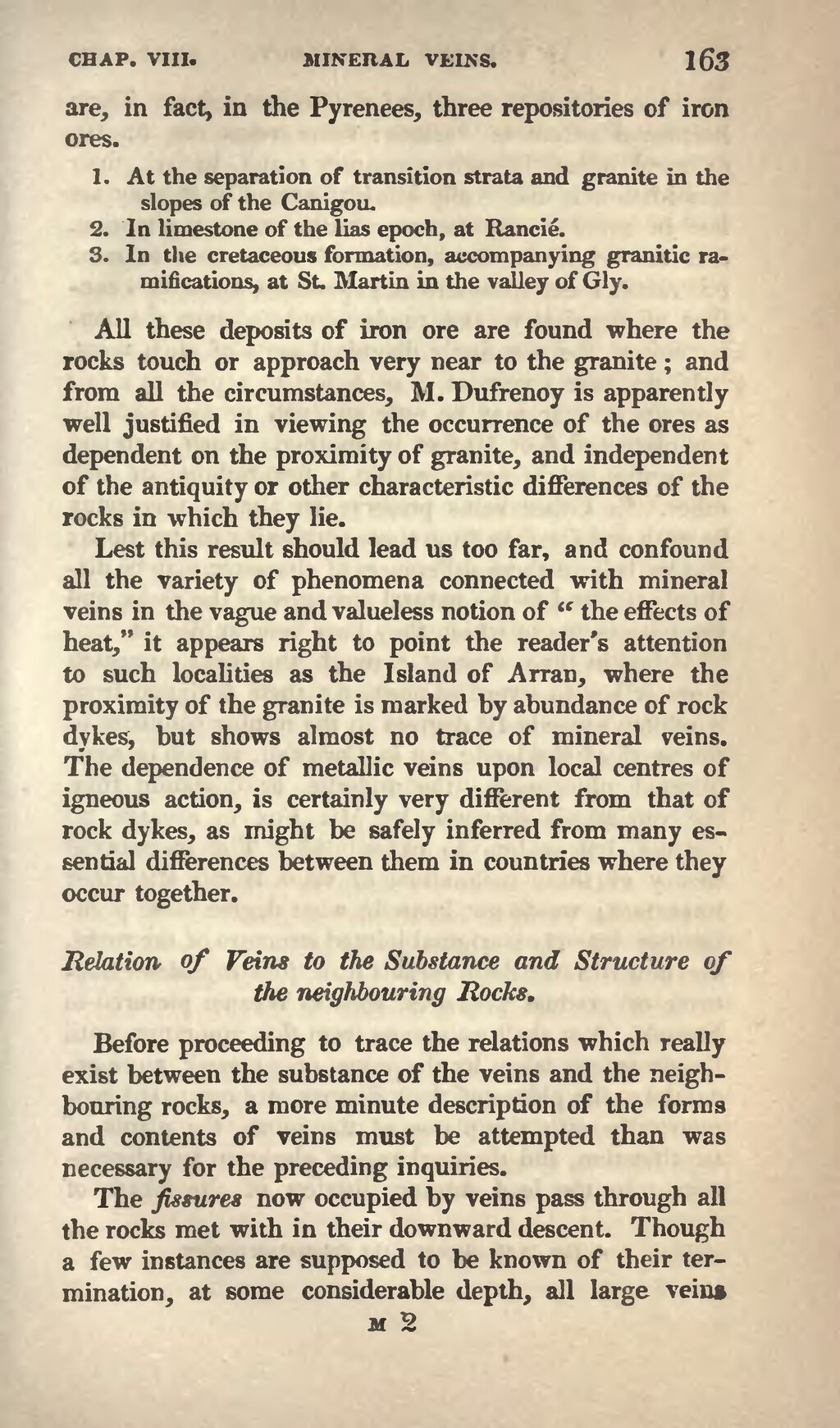are, in fact, in the Pyrenees, three repositories of iron ores.
All these deposits of iron ore are found where the rocks touch or approach very near to the granite; and from all the circumstances, M. Dufrenoy is apparently well justified in viewing the occurrence of the ores as dependent on the proximity of granite, and independent of the antiquity or other characteristic differences of the rocks in which they lie.
Lest this result should lead us too far, and confound all the variety of phenomena connected with mineral veins in the vague and valueless notion of "the effects of heat," it appears right to point the reader's attention to such localities as the Island of Arran, where the proximity of the granite is marked by abundance of rock dykes, but shows almost no trace of mineral veins. The dependence of metallic veins upon local centres of igneous action, is certainly very different from that of rock dykes, as might be safely inferred from many essential differences between them in countries where they occur together.
Relation of Veins to the Substance and Structure of the neighbouring Rocks.
Before proceeding to trace the relations which really exist between the substance of the veins and the neighbouring rocks, a more minute description of the forms and contents of veins must be attempted than was necessary for the preceding inquiries.
The fissures now occupied by veins pass through all the rocks met with in their downward descent. Though a few instances are supposed to be known of their termination, at some considerable depth, all large veins
